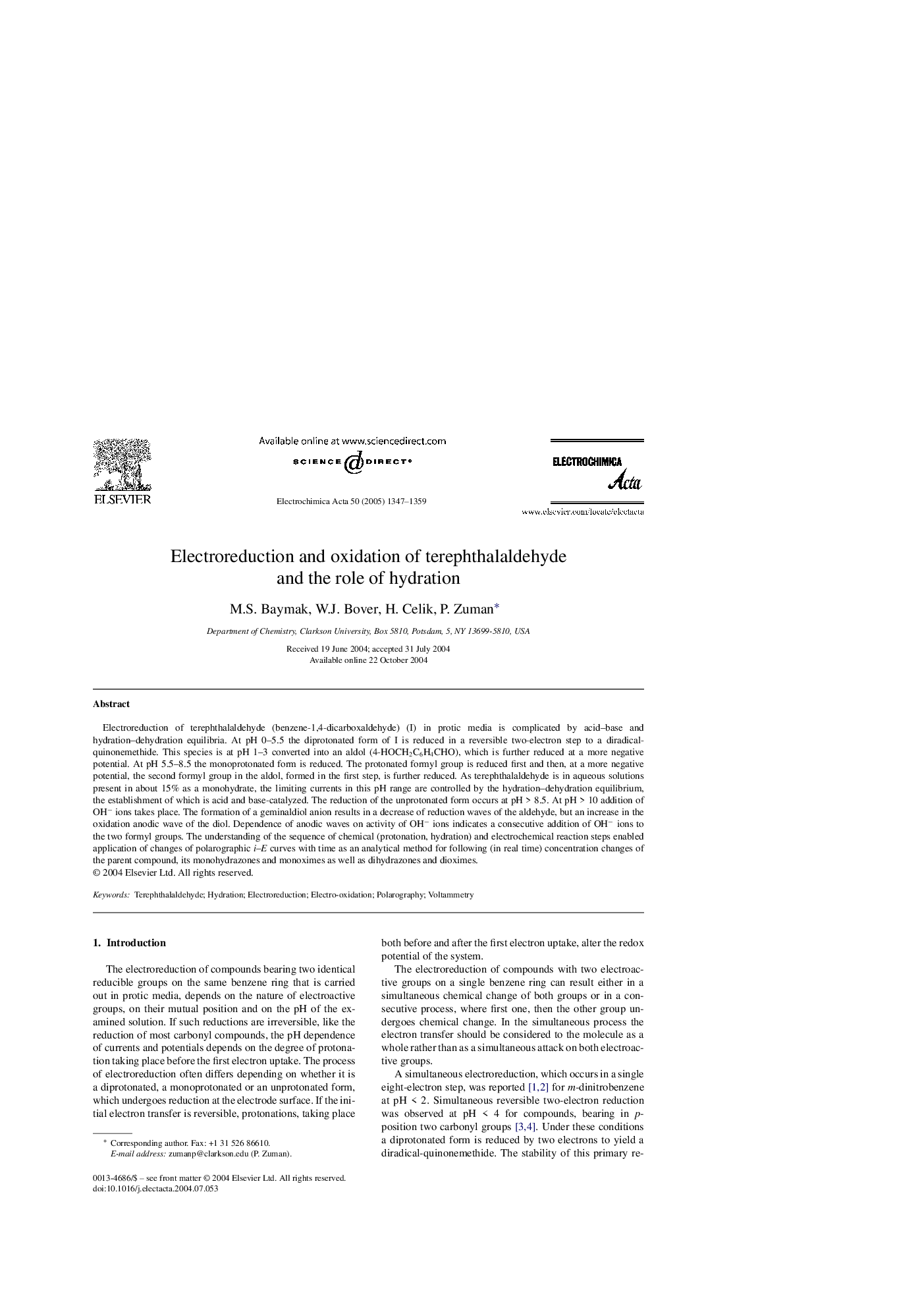| Article ID | Journal | Published Year | Pages | File Type |
|---|---|---|---|---|
| 10269774 | Electrochimica Acta | 2005 | 13 Pages |
Abstract
Electroreduction of terephthalaldehyde (benzene-1,4-dicarboxaldehyde) (I) in protic media is complicated by acid-base and hydration-dehydration equilibria. At pH 0-5.5 the diprotonated form of I is reduced in a reversible two-electron step to a diradical-quinonemethide. This species is at pH 1-3 converted into an aldol (4-HOCH2C6H4CHO), which is further reduced at a more negative potential. At pH 5.5-8.5 the monoprotonated form is reduced. The protonated formyl group is reduced first and then, at a more negative potential, the second formyl group in the aldol, formed in the first step, is further reduced. As terephthalaldehyde is in aqueous solutions present in about 15% as a monohydrate, the limiting currents in this pH range are controlled by the hydration-dehydration equilibrium, the establishment of which is acid and base-catalyzed. The reduction of the unprotonated form occurs at pH > 8.5. At pH > 10 addition of OHâ ions takes place. The formation of a geminaldiol anion results in a decrease of reduction waves of the aldehyde, but an increase in the oxidation anodic wave of the diol. Dependence of anodic waves on activity of OHâ ions indicates a consecutive addition of OHâ ions to the two formyl groups. The understanding of the sequence of chemical (protonation, hydration) and electrochemical reaction steps enabled application of changes of polarographic i-E curves with time as an analytical method for following (in real time) concentration changes of the parent compound, its monohydrazones and monoximes as well as dihydrazones and dioximes.
Related Topics
Physical Sciences and Engineering
Chemical Engineering
Chemical Engineering (General)
Authors
M.S. Baymak, W.J. Bover, H. Celik, P. Zuman,
